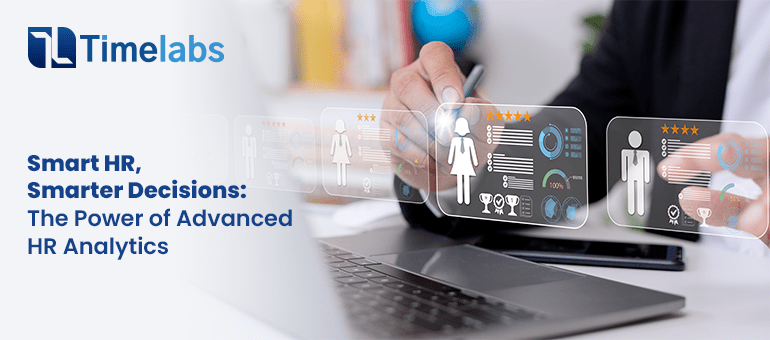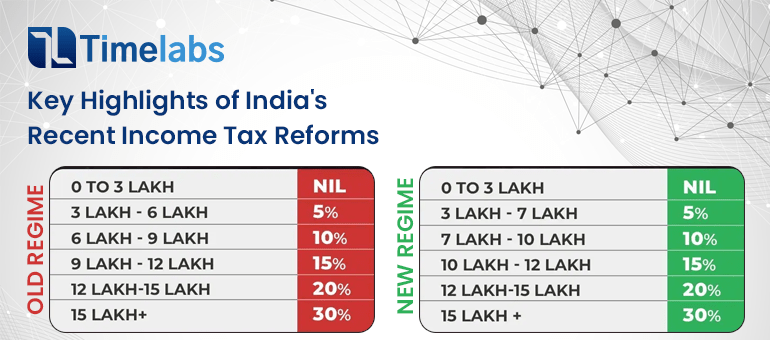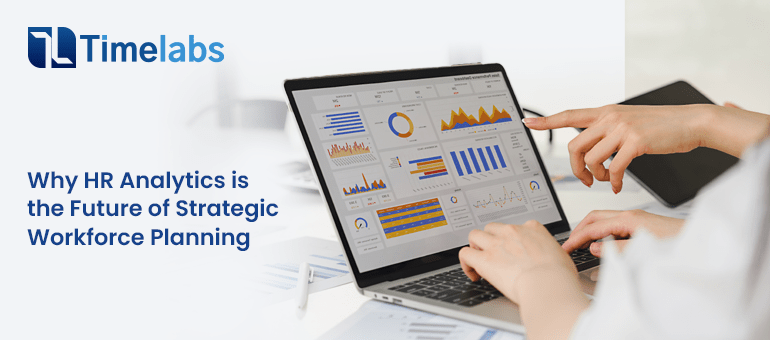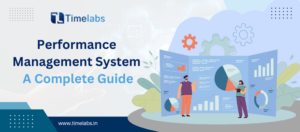Market projections reveal striking growth potential for HR analytics, expected to reach $3.6 billion within three years – a 90% increase that signals its critical role in modern workforce management. Senior leadership recognizes this shift, with 70% of executives prioritizing people analytics to enhance their organizational capabilities.
Business outcomes validate the power of data driven HR decisions. Organizations witness tangible results: stores generate an additional $100,000 in annual operating income from just a 0.1% boost in employee engagement. Companies embracing ethnic diversity demonstrate 36% stronger performance compared to industry peers. HR teams equipped with analytics tools report remarkable progress, including a 25% decrease in turnover for critical positions over a four-year span.
This resource explores the HR analytics landscape, from its evolutionary journey to practical implementation strategies. Readers will discover essential building blocks for analytics success, understand maturity progression paths, and learn proven approaches to overcome deployment hurdles. The goal remains clear – equipping HR professionals with knowledge to drive strategic, measurable impact through informed decision-making.
The Evolution of Data Driven HR Decisions
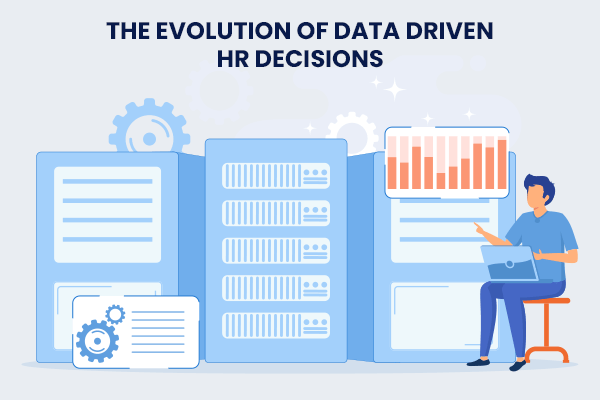
Evidence-based practices reshaped HR operations fundamentally during the 1990s, marking HR’s departure from gut-feel decisions toward data-informed strategies. The Y2K challenge prompted organizations to implement integrated HR Information Systems (HRIS), converting manual processes into digital formats. This digital shift opened new possibilities for organizations to analyze workforce data at granular levels.
From intuition to evidence-based HR practices
Medical practitioners pioneered evidence-based approaches, showcasing how clinical expertise could blend with research evidence for superior outcomes. Modern HR teams now mirror this methodology, drawing wisdom from internal metrics, academic research, professional expertise, and stakeholder perspectives. This scientific approach elevates HR decision-making beyond temporary solutions or trending practices.
Why traditional HR metrics fall short today
Standard metrics – turnover rates, recruitment timelines, engagement scores – served HR teams reliably for decades. Yet these conventional measures struggle to reflect today’s complex workplace realities. Creative outputs and strategic contributions often defy simple measurement frameworks.
Three key limitations of traditional metrics:
- Employee contributions and team synergies remain partially invisible
- Individual metrics fail to capture collaborative achievements
- Survey-heavy measurement approaches risk response fatigue and data distortion
The rise of advanced analytics in modern HR
Workforce planning challenges drive HR analytics adoption across industries. PwC’s research reveals 77% of CEOs rank skill shortages as their primary business concern. This reality prompts half of all CEOs to embrace data analytics for talent acquisition and retention.
HR technology capabilities expanded dramatically since 2018, moving from basic management tools to sophisticated cloud platforms with real-time insights. Organizations harnessing analytics for hiring decisions report remarkable outcomes – 80% better recruiting efficiency coupled with 50% lower attrition rates.
Data-driven people management creates objective decision frameworks, reducing personal biases in workforce decisions. HR professionals now conduct thorough diagnostic reviews, examining workplace patterns through multiple lenses. Advanced prescriptive analytics guide leaders toward specific actions, converting raw data into strategic advantage.
Building Your HR Analytics Foundation
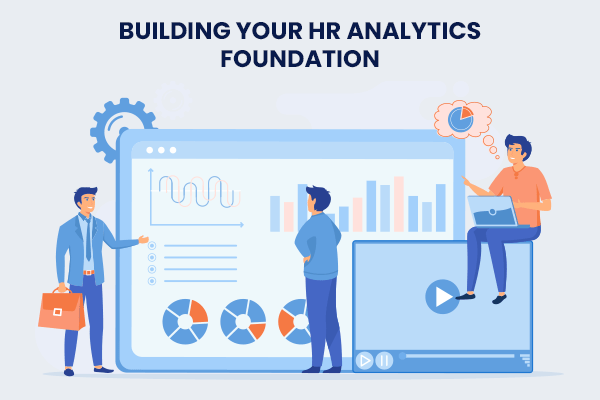
Quality data foundations determine analytics success in modern HR operations. Organizations lose an average of INR 1088.51 million yearly due to poor data quality, highlighting the critical nature of robust fundamentals.
Essential data sources for comprehensive HR insights
Successful HR analytics demands orchestrated data from multiple channels. The HR Information System (HRIS) functions as a command center, housing core workforce information – from demographics to performance metrics. Essential data streams include:
- Applicant Tracking Systems (ATS): Rich recruitment intelligence and hiring patterns
- Learning Management Systems (LMS): Skills Development Pathways
- Performance Management Tools: Employee achievement records
- Compensation Systems: Total rewards architecture
Setting up your analytics infrastructure
Three pillars support effective analytics infrastructure:
Data integration tools stand first, consolidating scattered information streams. ETL (Extract, Transform, Load) protocols shepherd data from source systems into centralized warehouses, creating single-source reliability for workforce analytics.
Automated data pathways follow, linking HRIS with enterprise platforms to eliminate manual errors. This connectivity reveals workforce patterns across previously siloed datasets.
Standardized protocols complete the foundation, establishing clear rules for data entry and management. These guidelines ensure analytical consistency across the organization.
Establishing data quality standards
Quality standards safeguard analytics accuracy and reliability. With organizations managing an average of 400 distinct data sources, robust quality measures become essential.
Quality assurance demands:
- Regular Audits: Systematic data reviews uncover and correct inconsistencies
- Quality Parameters: Six key dimensions guide excellence – completeness, accuracy, validity, consistency, uniqueness, and timeliness
- Automated Validation: Proactive error detection preserves analytical integrity
Data governance frameworks protect information assets while maintaining quality benchmarks. These protocols align data management with strategic objectives.
Success requires seamless integration of data collection mechanisms, secure storage architecture, and purpose-built analytical tools. This infrastructure empowers HR teams to extract meaningful insights from workforce data, spanning operational metrics to employee sentiment indicators.
Implementing Core HR Software Analytics

HR analytics software reshapes workforce management through data-driven decision capabilities. Research validates this shift – organizations report 59% lower turnover rates and 41% reduced absenteeism after adopting analytics solutions.
Key features of analytics-ready HR systems
Modern HR platforms excel through sophisticated analytical capabilities. Purpose-built dashboards deliver critical metrics at leadership fingertips, enabling swift, informed choices. Predictive models examine historical patterns, projecting future workforce scenarios with remarkable accuracy.
Real-time analytics emerge as game-changers for HR teams, supporting immediate responses to emerging trends. Performance tracking mechanisms reveal talent development opportunities while spotting early warning signals.
Essential platform capabilities include:
- Industry benchmarking instruments
- Employee sentiment measurement tools
- Skills development analytics
- Strategic workforce planning modules
- DEI progress indicators
Integration capabilities with existing platforms
Data harmony defines successful HR analytics deployment. Most enterprises juggle approximately 400 distinct data sources, demanding robust integration architecture. Modern platforms excel at unifying these diverse data streams into coherent workforce insights.
Smart integration frameworks reduce operational costs while enhancing employee experiences. Data pipelines maintain continuous information flow, ensuring decision-makers access current, accurate insights. Success stories abound – integrated analytics drive 75% better recruiting outcomes and 32% productivity gains.
User adoption strategies for analytics tools
Analytics success demands thoughtful implementation approaches. Organizations defining clear analytics KPIs show 46% higher achievement rates.
Effective adoption strategies prioritize contextual learning experiences and just-in-time support mechanisms. Usage pattern analysis reveals optimization opportunities and potential friction points. This measured approach maximizes platform value realization.
Clear objectives precede the analytics rollout for optimal results. Leadership teams grasp the value through proper context setting. Evidence shows informed stakeholders drive 8x more strategic value from HR analytics functions.
Advancing Through the HR Analytics Maturity Model
HR analytics maturity defines organizational readiness for data-driven workforce decisions. Most teams start with basic reporting capabilities, progressing methodically toward advanced analytical competencies.
Stage 1: Descriptive reporting and dashboards
Early analytics efforts typically center around a single HR data specialist producing basic insights through spreadsheets and fundamental business tools. Teams focus on essential metrics – headcount fluctuations, hiring volumes, and attrition patterns. Current research shows 56% of organizations remain at this foundational stage. Resource constraints and metric inconsistencies often challenge growth beyond this point.
Stage 2: Diagnostic analysis of workforce trends
Mature organizations build dedicated analytics teams equipped with specialized HR reporting platforms. Research indicates 30% of organizations achieve this milestone. Analytics focus shifts from “what happened” to deeper explorations of causality. Success markers include:
- Streamlined central reporting
- Multi-source data synthesis
- Advanced security protocols through role-based access
Stage 3: Predictive modeling for future planning
Select organizations advance into predictive territory. Analytics teams expand their capabilities, blending historical insights with statistical models to forecast workforce trends. Analytics translators emerge as crucial bridges between technical experts and business leaders.
Notable achievements include sophisticated correlation studies connecting engagement to retention, plus early warning systems highlighting HR’s business impact. Self-service analytics capabilities free core teams from routine reporting duties.
Stage 4: Prescriptive recommendations for optimal outcomes
Elite organizations reach this summit of analytics sophistication. Their mastery shows through comprehensive workforce understanding, addressing three critical questions:
- What happened?
- Why did it happen?
- What lies ahead?
These organizations demonstrate exceptional data integration across HR and business systems, enabling proactive workforce planning. Yet success demands focus – avoiding analysis paralysis through strict prioritization of business-critical initiatives.
Progression through these stages demands methodical development. Organizations must establish consistent metrics and reporting frameworks, invest in integration capabilities, enhance team skills, and strengthen governance protocols. This measured approach builds lasting analytics capabilities, delivering increasingly sophisticated workforce insights.
Must Read: Upgrade Your Workforce: The Ultimate HRMS & Employee Onboarding Solution
Overcoming Common HR Analytics Implementation Challenges
HR analytics success demands careful attention to persistent organizational hurdles. Research reveals sobering reality – 81% of people analytics initiatives stumble on ethics and privacy concerns.
Addressing data privacy and ethical concerns
Privacy safeguards define responsible analytics practice. Modern HR teams must craft precise protocols for data collection while adhering to GDPR and CCPA requirements. Essential protection measures include:
- Role-Based Access Control (RBAC) frameworks preventing unauthorized data exposure
- Systematic privacy audits paired with security reviews
- Employee-centric data collection methods emphasizing consent
- Robust personal information anonymization standards
Building analytics capabilities within HR teams
Data literacy gaps challenge many HR professionals’ readiness for analytics adoption. Success demands strategic capability building:
HR teams need structured learning paths focused on data interpretation skills. Business partners and excellence centers require specialized query development and KPI identification training.
Cross-functional expertise proves essential. Teams spanning HR, sales, marketing, and operations bring diverse perspectives to analytics initiatives.
Analytics specialists serve as vital translators between technical and business domains. Their expertise converts business challenges into analytical frameworks, ensuring the practical application of insights.
Securing executive buy-in and support
Leadership commitment shapes analytics success. Evidence shows that stakeholder-engaged organizations achieve strategic value eight times more frequently through analytics.
Leadership engagement strategies demand:
- Business Impact Focus: Clear connection between analytics and financial outcomes
- Risk Management: Open dialogue about privacy, security, and investment returns
- Consistent Updates: Regular progress sharing with executive stakeholders
Change management excellence supports these efforts. Teams must educate stakeholders while providing robust system support. Thoughtful execution transforms implementation challenges into opportunities for enhanced workforce decision-making.
Conclusion
HR analytics stands today as the cornerstone of strategic workforce management. Organizations embracing analytics capabilities report remarkable outcomes – 59% lower turnover rates paired with 41% reduced absenteeism demonstrate tangible business value.
Success rests upon foundational elements: pristine data quality, sophisticated infrastructure, and rich data sources. Organizations progress methodically from basic reporting toward predictive excellence, each stage building upon previous capabilities.
Critical success pillars emerge:
- Data governance excellence
- HR team’s analytical prowess
- Ethical data stewardship
- Sustained leadership commitment
Forward-thinking organizations understand analytics represents more than technological advancement – it marks fundamental evolution toward evidence-driven people decisions. Analytics-equipped teams excel in talent decisions, development initiatives, and measurable business contributions.
Excellence in data-driven HR begins with honest capability assessment followed by systematic competency building. Quality data, user engagement, and stakeholder commitment shape the path forward. These elements, properly orchestrated, unlock unprecedented workforce insights and strategic advantage.
FAQs
Q1. How does HR analytics improve decision-making in organizations?
Ans: HR analytics enhances decision-making by providing data-driven insights. It helps identify workforce trends, predict future needs, and optimize talent management strategies. By analyzing data from various sources, HR professionals can make more informed and strategic decisions about recruitment, retention, and employee development.
Q2. What are the key stages in the HR analytics maturity model?
Ans: The HR analytics maturity model typically consists of four stages: descriptive reporting and dashboards, diagnostic analysis of workforce trends, predictive modeling for future planning, and prescriptive recommendations for optimal outcomes. Organizations progress through these stages as they develop more sophisticated analytics capabilities.
Q3. What challenges do companies face when implementing HR analytics?
Ans: Common challenges in implementing HR analytics include addressing data privacy and ethical concerns, building analytics capabilities within HR teams, and securing executive buy-in and support. Organizations must also focus on data quality, integration of multiple data sources, and fostering a data-driven culture to overcome these hurdles.
Q4. How can HR analytics improve talent acquisition and retention?
Ans: HR analytics can significantly enhance talent acquisition by identifying the most effective recruitment sources and predicting candidate success. For retention, it helps identify attrition risks and improve employee engagement. By analyzing performance data, organizations can also develop targeted training programs and identify high-potential employees.
Q5. What are the essential components of a strong HR analytics foundation?
Ans: A strong HR analytics foundation requires comprehensive data sources, a robust analytics infrastructure, and established data quality standards. Key components include integrated HR information systems, data warehouses, automated data feeds, and clear data governance policies. Regular audits and validation processes are crucial for maintaining data accuracy and reliability.
